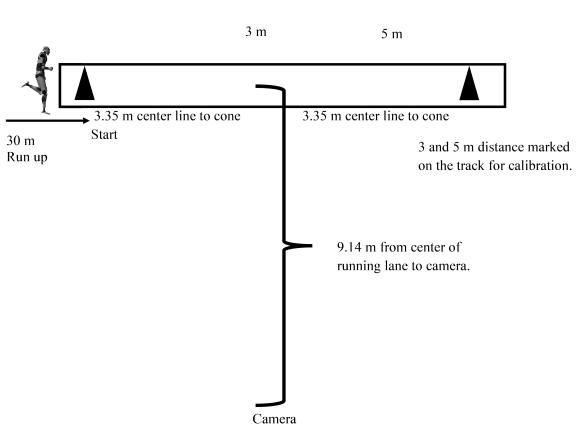-
Home
-
About JCTR
-
Gold Open Access
-
Issues
-
Editorial board
-
Author guidelines
-
Publication fees
-
Online first
-
Special issues
-
News
-
Publication ethics
-
Partners
-
Submit your manuscript
-
Submit your review report
-
Editorial Office
-

This work is licensed under a Creative Commons Attribution-NonCommercial 4.0 International License. ISSN print: 2382-6533 ISSN online: 2424-810X
Volume 7 Issue 5
Relationship between anthropometric and kinematic measures to practice velocity in elite American 100m sprinters
Amber Murphy*, Kenneth P. Clark, Nicholas Murray, Bridget Melton, Ralph Mann, Randall Rieger
Murphy et al. J Clin Transl Res 2021; 7(5):6
Published online: September 27, 2021
Abstract
Background: There exists a paucity of anthropometric and kinematic data for elite United States (US) sprinters and further analysis of how these variables correlate with sprint velocity in practice is warranted.
Aim: The purpose of this investigation was to examine the relationship of anthropometric and kinematic variables and practice sprint velocity of elite sprint athletes when separated by gender.
Methods: Participants included elite US 100m sprinters (total: N=38, male: n=19, female: n=19). Inclusion criteria was participation in the 100m semifinals or finals at the US Outdoor National Championships from 2015-2019. Anthropometric data and 300 Hz video during maximum velocity sprinting were collected during a practice session and video was digitized to determine the kinematic variables of interest. Relationships with maximal sprint velocity were assessed using Pearson correlation coefficient and linear regression analysis.
Results: Males showed significant unadjusted relationships between practice velocity and step length (r = 0.668; p = 0.002), horizontal backward foot velocity at touchdown (r = 0.459; p = 0.048) and upper leg full extension angle (r = -0.585; p = 0.009). Multiple regression analysis found that when adjusting for these three variables step length was the only significant predictor of practice velocity in males which accounted for 44.6% of the variability in practice velocity in males. The females showed a significant relationship between practice velocity and step length (r = 0.629; p = 0.004) which accounted for 39.5% of the variability in practice velocity.
Conclusion: These results provide researchers and coaches with important information regarding the anthropometric and kinematic variables related to elite top speed sprinting performance.
Relevance for patients: Training focused on increasing step length may be an efficient way to improve velocity in practice.

DOI: http://dx.doi.org/10.18053/jctres.07.202105.006
Author affiliation
1. Exercise Science Department, Concordia University Chicago, USA
2. Department of Kinesiology, West Chester University of PA, USA
3. Department of Kinesiology, University of Nevada, Reno, USA
4. Department of Health Sciences and Kinesiology, Georgia Southern University
5. CompuSport, Las Vegas, NV, USA
6. Department of Mathematics, West Chester University of PA, USA
*Corresponding Author
Amber Murphy
Exercise Science Department, Concordia University Chicago, USA
Tel: (407) 453-9169
Email: crf_murphya3@cuchicago.edu
Handling editor:
Michal Heger
Department of Pharmaceutics, Utrecht University, the Netherlands
Department of Pharmaceutics, Jiaxing University Medical College, Zhejiang, China

